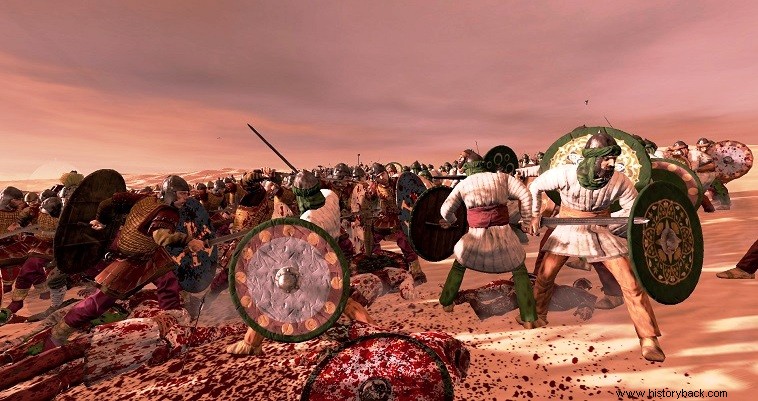
The battle at Caltabouturo in Sicily is one of the least known of the Byzantine Empire, but also one of the most devastating for its Arab rivals.
The Arab emirate of the Aglavids extended into present-day Libya and Algeria. It had also extended to Sicily. In 880 AD the Byzantines achieved a great victory by sea against the Arabs. As a consequence of this development, Emperor Basil I the Macedonian decided to attempt a counterattack in Sicily.
In 881 AD an Arab force under Hasan ibn al-Abbas defeated the Byzantine commander of Sicily Varsacius near Taormina (Tauromenio). However, the emperor did not resign and sent reinforcements under the general Mussilikis (or Mosilikis). The general was in the area from 880 AD. and knew the area and the enemy.
The general, probably of Armenian origin, bore the title of spantharocandidatus and tourmarch of Mesopotamia. Musilikis seems to have also served as a general in Kefalonia. A seal that has been preserved reads:"Lord help my servant Mussiliki basilico spatharocandidato and tourmarch of Mesopotamia". Moussilikis had also played an important role in the dethronement of the emperor Irene of Athens.
However, little is known about the battle and they come from the Life of St. Ignatius of Constantinople and the Arab historian al-Athir. According to the first source the general invoked the saint before the battle and he appeared to him in a vision and told him to attack with his right horn against the Arabs.
This is what the general did and he won. We know nothing else of the progress of the battle, nor of the opposing forces and its evolution. Probably the Byzantines "broke" the Arab left flank and flanked and crushed the enemy army.
The Arab historian states that the Byzantines achieved a huge victory and that only seven men survived from the Arab army... Nothing else is known about the battle which in any case bought time for the Byzantine presence in Sicily which was maintained for a few more decades. It is worth noting that the battlefield was named after an Arab fort that was built nearby.
